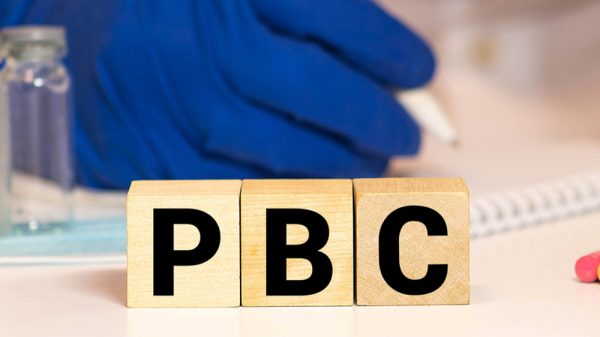Are you preparing for a liver transplant procedure? Estimates show that nearly 101,000 transplants are done yearly in countries where 90% of the surgeries are done. The process is a complex one that involves being approved for the medical procedure, finding a new liver, and securing the funds. One possible complication is something called liver transplant rejection. The human body is hardwired to protect itself from various foreign objects although sometimes it produces negative results. This involves the body perceiving the new organ as a threat and attacking it using something called antibiotics. Even if the transplant itself is successful it can cause various health problems for liver disease/liver cancer patients.
The good news is that liver transplants are usually very successful. For example, the survival rate is 75% within five years. Patients are given medicines following the procedure to trick the body into not detecting the new liver as a threat. If you or a loved one is planning to undergo this major surgery it’s critical to know about the function of these procedures so you’ll know what to expect. One key benefit of a liver transplant is it’s the only true “cure” for people with health conditions like late-stage liver disease.
What Exactly Is a Liver Transplant?
The liver is the human body’s largest solid organ and has several key functions that include:
- Preventing infection
- Processing nutrients/hormones
- Removing toxins/bacteria from blood
- Producing proteins for blood clotting
- Regulating the immune system
- Making bile for the absorption of vitamins/fats/cholesterol
A liver transplant is a surgical procedure involves removing a severely damaged organ that’s not functioning properly. The condition is known as “liver failure.”
Below are the 2 common types of liver transplantation:
1. Living donor transplant
This type of transplant is done from a living donor. The main goal is to deal with medical emergencies while the patient waits to find a donor or his/her liver isn’t diseased enough to quality for a whole liver transplant from a deceased donor.
Living-donor transplants provide some benefits over deceased donors. It eliminates the need to wait for an available deceased donor, which can be a long/complex process.
Another benefit is the human liver quickly grows back to its previous size following partial removal of the organ. This provides a fast recovery time for the donor.
The number of liver transplants in the USA is now over 30,000. However, this figure is still much smaller than the number of people who request organ transplants. The yearly death rate for liver disease is about 2% in the USA and somewhat higher among women than men.
2. Orthotopic liver transplant
Qualifying for a liver transplant from a deceased donor is quite complex. You must first be approved for the medical procedure and prove you can pay for it. Even if you get a green light you’re put on a waiting list of people waiting for a donor.
What Is Liver Transplant Rejection?
The human body can react to any foreign object by rejecting it. For example, the body perceives a transplanted organ as a possible threat then uses antibodies to attack/destroy the new organ. It doesn’t realize that the new liver is helpful.
There are various signs of liver rejection that doctors will watch out for. Various infections are possible and each patient could experience different symptoms. They include ones like:
- Jaundice (yellow skin/eyes)
- Irritability
- Stomach swelling/tenderness
- Fatigue
- Headache
- Itchy skin
- Fever over 100° F
- Dark urine
It’s important to consult the transplant team if you have any questions/concerns. Keep in mind that rejection symptoms could be like other medical conditions/issues.
The surgeon prescribes medications to prevent the body from rejecting the liver. This is often prescribed for the rest of the patient’s life in order to battle rejection. Various anti-rejection medicines are prescribed and it’s based on the patient’s particular needs.
The dosages that a doctor prescribes might change often. This is based on the body’s response. One of the side-effects is people with a liver transplant will have a higher infection risk. It’s important to find a good balance between preventing organ rejection and infection risk.
The infection risk is highest during the first couple of months following the organ transplant. This is because doctors prescribe a higher dose of anti-rejection meds.
Patients might need other medicines to prevent other infections. They include herpes, respiratory viruses, and yeast infection.
Doctors give periodic blood tests to determine how much medicine is present. This will help to make sure you have the right amount of anti-rejection medication.
Another sign of how much medicine you need is your white blood cells. This is a basic blood test that can quickly determine if you have any health issues related to your liver transplant and anti-rejection medicines.
What to Expect from Liver Transplant
BEFORE THE PROCEDURE
You should expect to be put on a waiting list after being approved for an organ transplant. Scores are based on the patient’s risk of death during the next 90 days. The MELD score for adults and PELD scores for kids under 12 years old determines your place on the waiting list. Patients with the most severe liver problems are put at the top of the list.
The amount of time required to wait for a liver can vary significantly. The wait can be days or months. Unfortunately, some patients never get a donated liver. During the wait for a new liver, the doctor can prescribe medicines to make the patient as comfy as possible until they receive the liver.
If the patient’s condition worsens and they’re hospitalized often then their MELD/PELD score gets updated. The complications for late-stage liver disease are serious and often require fast medical attention.
DURING THE PROCEDURE
In the case, a donated liver is available things can move quickly. You’ll have to undergo a test to check if you’re healthy enough for liver transplant surgery. If it is then the transplant surgery takes place soon.
The specific procedure will vary based on whether you receive a liver from a living or deceased donor. If you get a partial liver from a living donor, then the organ of the donor/receiver will grow back to full size within a couple months.
AFTER THE PROCEDURE
Following the procedure, doctors keep testing the liver function and watch for complications. You should expect to stay in the intensive care unit (ICU) for up to a couple of days. The doctor/nurses will run tests to check the liver’s functionality.
You should also expect to stay up to 10 days in the hospital. You’ll be moved to the transplant recovery section of the hospital and receive medicines to fight liver transplant rejection.























